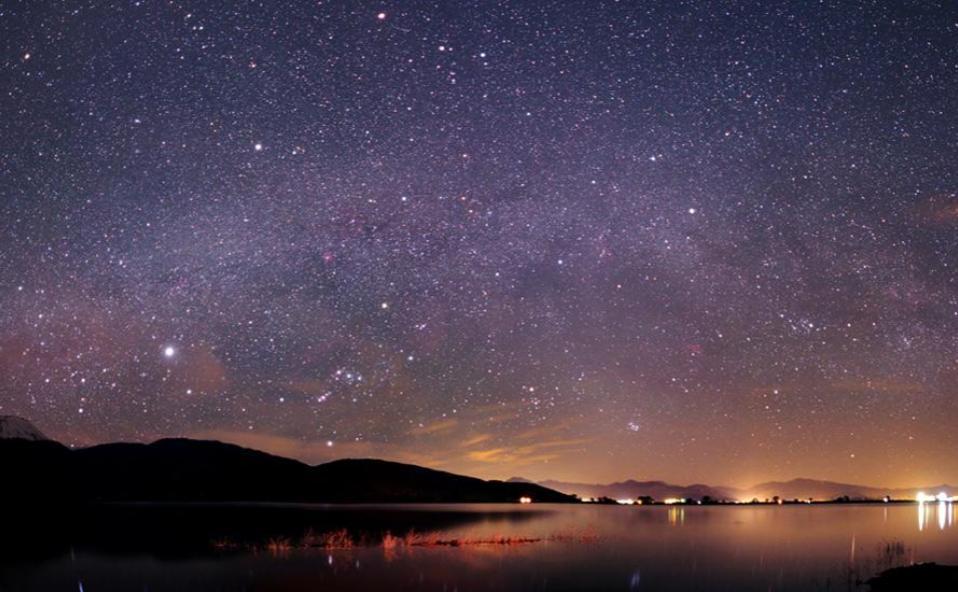As March arrives, we welcome the VERNAL EQUINOX on March 19th; the first day of spring. Sky-watchers attention will be drawn to Venus glittering in the south-western sky just after sunset. Venus will remain visible all month, from sunset until it sets, about 3 hours later. Just two months ago Venus helped us to see the solar system’s most distant planet, Neptune, because Venus’ brightness pointed the way to look for the very dim Neptune, which we can only see with optical aid.
This month Venus will point the way for us to find Uranus, 7th planet from the Sun, and also very distant from Earth (1.9 billion miles).
Venus, brilliant in the southwest, and distant Uranus will appear just 2 degrees apart on March 7th. Use binoculars to spy Uranus just below and left of bright Venus. There will be a star in the same direction, but closer to Venus. So look about twice the star’s distance from Venus to pick out Uranus.
On March 8th two stars will appear along the same track away from Venus to Uranus, so again look twice that distance down and left of Venus to get to Uranus. Were it not for the brightness of Venus, seeing Uranus and Neptune (2 months ago) would be very hard because they are so far away and so dim.
Last month I mentioned the arrival of 3 more planets which began rising into the pre-dawn eastern sky, Mars, Jupiter, and Saturn. In March all 3 of these planets rise earlier and gain greater altitude, and they will provide us with several planetary conjunctions to observe. The Moon will also join this party for those sky-watchers who venture out before sunrise.
Generally, Mars, Jupiter, and Saturn will be strung out along a 20 degree line above the east-southeast sky between 5:30 and 6:15 am. local time. (I should mention here that daylight savings time begins at 2 am on March 8th.) Several great planetary conjunctions and Moon gatherings will make it worthwhile for us to get up early to see them
On March 18th, the waning crescent Moon will be just below Mars and Jupiter, with the two planets only 2 degrees apart. Saturn will also be close-by; just to the left.
On March 19th, the Moon will have moved to the east (left of Saturn.)
On the morning of March 20th, Mars and Jupiter, having risen about 4 am, will be up and easy to see side by side between 5 and 6 am. Jupiter, the brighter, with a yellowish light; and Mars, the dimmer, with an orange glow, will make a nice contrast.
Mars being closer to us than Jupiter and Saturn will appear to have moved more than these two by March 31st, so that it will be found just below Saturn. These two planets will be nearly the same in brightness, but Saturn will have a soft yellow color, while Mars will be orange. Jupiter then will be seen nearby, but now to the right (west) of Saturn and Mars.
Rising early this month to see the planet interplay caused by their orbital motions and, of course, our own orbital motion around the Sun, will be well worth the effort. For those who care to wait; each month over the next 3 months will bring these planets higher, so that by early summer we can enjoy seeing them in our evening skies.
Full Moon is on March 9th.
Don’t miss the latest! You can subscribe to The Talbot Spy‘s free Daily Intelligence Report here



Write a Letter to the Editor on this Article
We encourage readers to offer their point of view on this article by submitting the following form. Editing is sometimes necessary and is done at the discretion of the editorial staff.